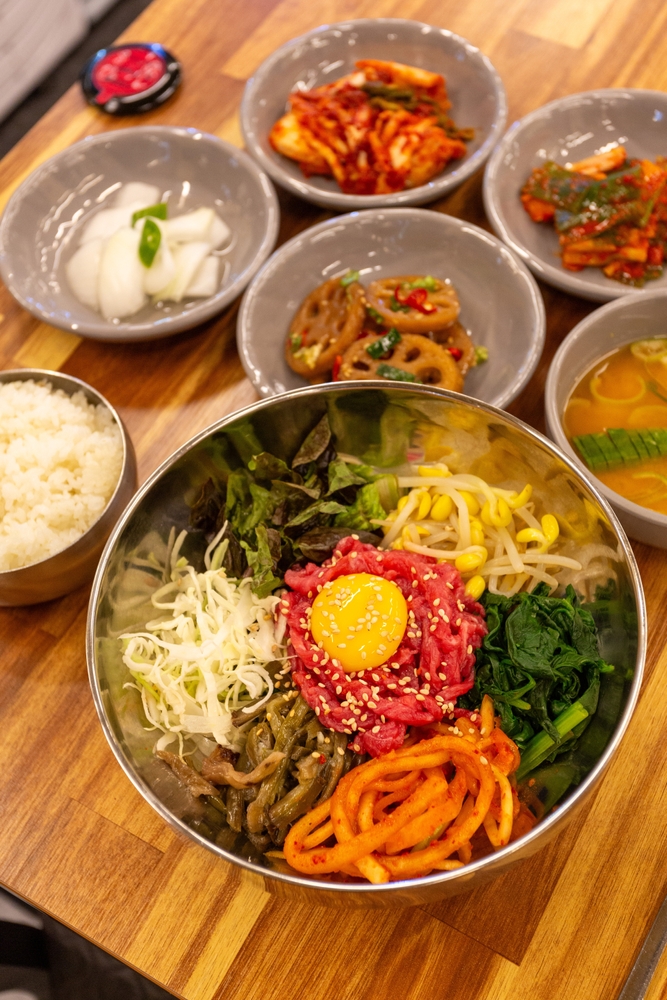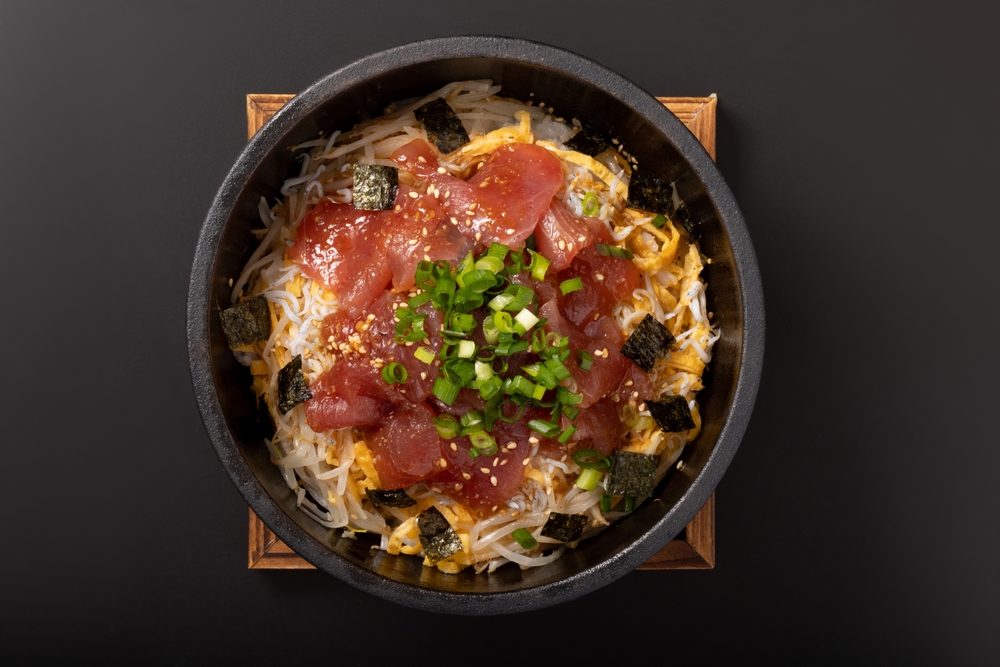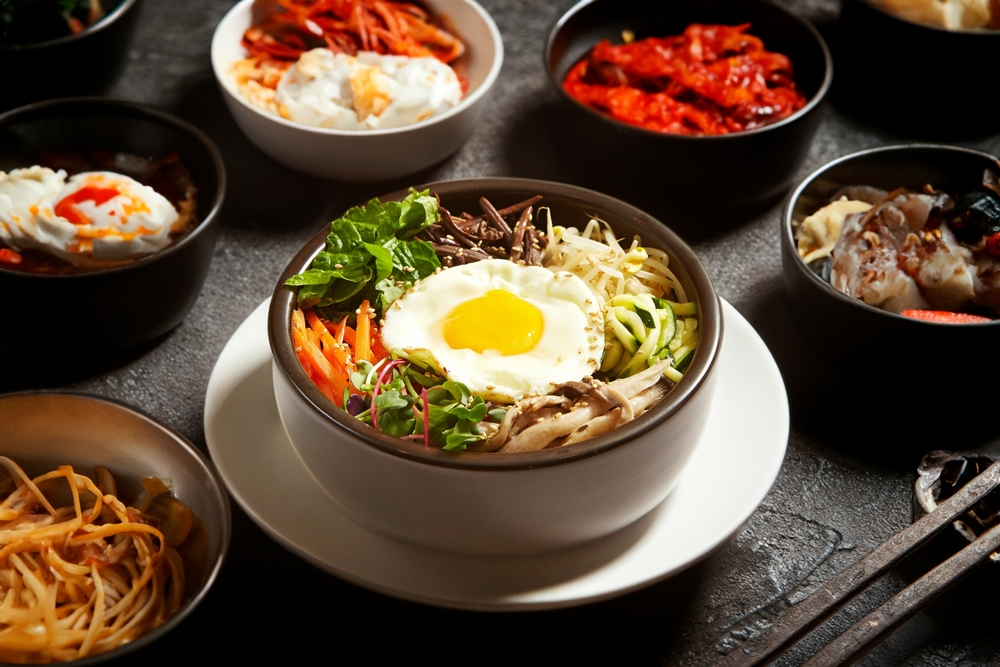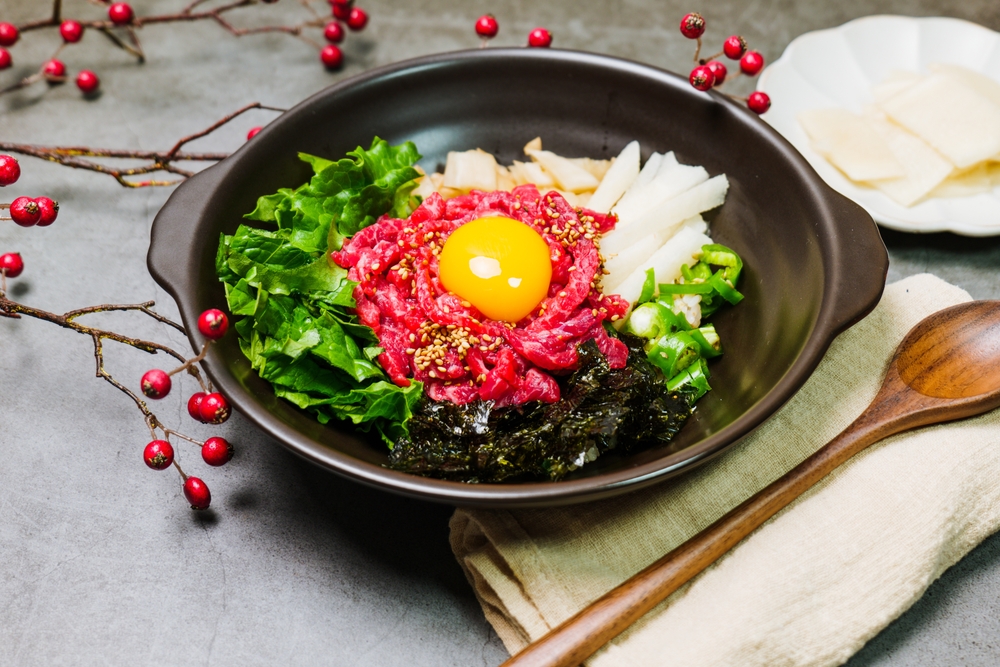There’s a special kind of joy in waiting for a hot stone bowl of bibimbap to cool just enough to dig in, and then scraping up that crunchy rice crust at the bottom like a well-earned prize.
No other South Korean dish captures the idea of harmony quite like bibimbap. It brings together different flavors and textures that unite beautifully in one bowl. So much so that even BTS member Kim Nam-joon, or RM, invoked bibimbap in his keynote speech at the Asia-Pacific Economic Cooperation (APEC) CEO Summit, comparing K-pop to the dish for its balance of contrasting elements.

“It’s a rice dish where different flavors, textures, and colors blend into something entirely new,” RM said, urging world leaders to give it a try.
In Gyeongju, where the APEC Summit was held, the dish often highlights Hanwoo, or Korean beef, which is a regional specialty of north Gyeongsang province. Here, the premium beef becomes the star ingredient, creating one of the most flavorful and refined versions of bibimbap you can find anywhere in the country.
So what exactly makes a bibimbap authentic, given the many variations that exist? One Korean content creator once said, ‘I am Korean, therefore whatever I add from the refrigerator makes my bibimbap authentic.‘
It is a spot where you can go on a culinary adventure and try the yukhoe bibimbap. Yukhoe is Korea’s answer to beef tartare. It is usually sliced thinly, served unseasoned, and allows its freshness to stand out. Yukhoe is often garnished with raw egg yolk, but it can also be served as a topping for bibimbap. Imagine it over warm rice and crisp vegetables—the raw beef adds a tender, almost buttery texture that blends into the mix.
While Gyeongju serves an excellent version of yukhoe, it can also be enjoyed in many other regions across South Korea.
Related story: Why Gyeongju, South Korea’s ‘museum without walls,’ deserves a spot on your travel list
Related story: If food is memory, why do other people’s opinions matter
Serving bowls

Bibimbap is typically served in two kinds of bowls. One is the regular type, which may be porcelain, ceramic, or stainless steel. The other is the dolsot, or hot stone pot.
I admit to being a little biased toward the dolsot because there’s a special kind of joy in waiting for the bowl to cool just enough to dig in, and then scraping up that crunchy rice crust at the bottom like a well-earned prize. If you use yukhoe as a topping for dolsot bibimbap, the heat from the stone pot gently sears the raw beef, cooking it to a medium-rare finish.

Bibimbap can be a mix of almost anything on rice. Bibim means “mixed,” and bap means “rice.” Every region in South Korea has its own take on bibimbap. Jeonju, hailed as the birthplace of the dish, has its own ingredients to add that make it specific to the city. This includes the hwangpomook, or the yellow mung bean jelly. Its smooth, slightly bouncy texture offers a nice contrast to the crunch of the vegetables and the tenderness of the meat.
Seoul delicious

If you’re in Seoul, bibimbap places are aplenty. If you’re feeling indulgent, a hearty serving in a dolsot at Tavolo 24 in JW Marriott Dongdaemun remains one of the most memorable I’ve ever had. They just have a way of making the rice extra crispy.
One of the most underrated spots to try the dish is in the Kalguksu Alley at Namdaemun Market. The bibimbap there is simple—just a mix of fresh vegetables—but it’s served with warm barley rice. Your order always comes with naengmyeon (cold noodles) and a bowl of knife-cut noodles. You can’t have it solo because it’s a set, and they’ll serve the other dishes whether you ask for them or not. All for less than 10,000 won or P400.
Bibimbap is so iconic that, before the pandemic, Korea’s flag carriers served it on their flights. Korean Air offered theirs with a small instruction card on how to eat it, while Asiana flight attendants would cheerfully ask if you already knew how. Apparently, some passengers would eat the ingredients separately instead of mixing them with the rice—and end up not liking it. I used to pick flights based on who served the better bibimbap, and I always preferred Asiana’s version, especially for its richer ssamjang. Sadly, it hasn’t returned to the menu, at least not in the economy seats on the Philippine route.

Some common ingredients of bibimbap are the ones readily available in the market: blanched greens, bracken, carrots, cucumber, bean sprouts, mushrooms, and fried egg. Any protein can be added: beef, shrimp, chicken, tuna, or whatever suits your fancy. Ssamjang, or the sweet and spicy sauce, ties everything together into one dish. A drizzle of sesame oil adds a nutty aroma that rounds out the dish.
So what exactly makes a bibimbap authentic, given the many variations that exist? The answer might be simpler than it seems. As one Korean content creator once said, “I am Korean, therefore whatever I add from the refrigerator makes my bibimbap authentic.”
Take that advice as your guide when making one at home: use your favorite vegetables and protein, add a spoonful of ssamjang and sesame oil, and your bibimbap will be perfect. After all, it was originally created to use up leftovers and as a hearty meal for the farmers.
Related story: Can restaurants reject their Michelin stars? These chefs did—and here’s why
Related story: Seoul is a tapestry that unfurls yard by yard, secret by secret
Related story: Seoul fights back against overtourism at the historic Bukchon Hanok Village





